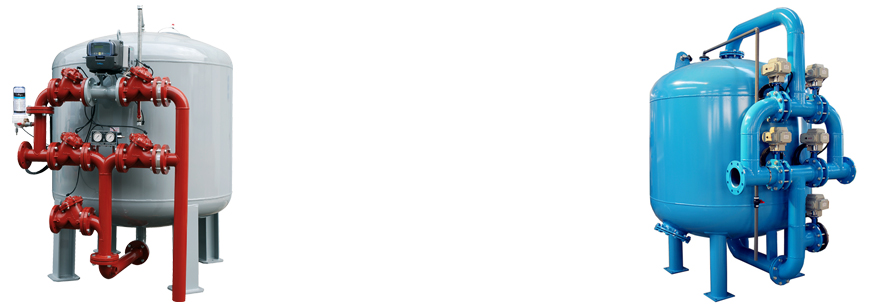
Media Filtration
Media Filtration has been used to reduce the level of dirt, rust, suspended matter and other impurities from water. As the water passes through the media, the impurities are held in the filter media material. Depending on the impurity and the media, several different physical and chemical mechanisms are active in removing impurities from the water. The fundamental physical and chemical mechanisms that occur during filtration have become better understood over the years. Filtration systems remove particulate matter and, because of the large surface area of filter media, they also can be used to drive chemical reactions that result in the removal of several contaminants. The following mechanisms for the removal of impurities by a given media are discussed in the next section.
A media filter is a type of filter that uses a bed of sand, peat, shredded tires, foam, crushed glass, geo-textile fabric, crushed granite or other material to filter water for drinking, swimming pools, aquaculture, irrigation, stormwater management and other applications.
Occlusion- removal due to the impurity's particle size The filtration of suspended solids by occlusion removes particles based on size. Particles are occluded, or held back, due to their inability to pass through the pores of a barrier of some sort. The barrier might be a packed bed of sand, a fiber mat, or a membrane surface. Filtration by occlusion is often called "surface filtration", since it occurs on the surface of the filtering media.
Adsorption- Adsorption refers to the removal of an impurity from a liquid to the surface of a solid. A water-born, suspended particle adheres to a solid surface when adsorption occurs. Adsorption differs from occlusion in that occluded particles are removed from a process flow because they are too large to pass through a physical restriction in the media. In most cases, adsorbed particles are affected by weak chemical interactions that allow them to adhere to the surface of a solid. Adsorbed particles become attached to the surface of a given media, becoming a weakly held part of the solid. Occluded particles are held in place by the flow of the water as they are trapped against a restrictive surface.
Reduction- removal of free residual chlorine through conversion to chloride ions in the presence of activated carbon media.
Oxidation- removal of iron and manganese using oxidation, precipitation and filtration in the presence of greensand media.